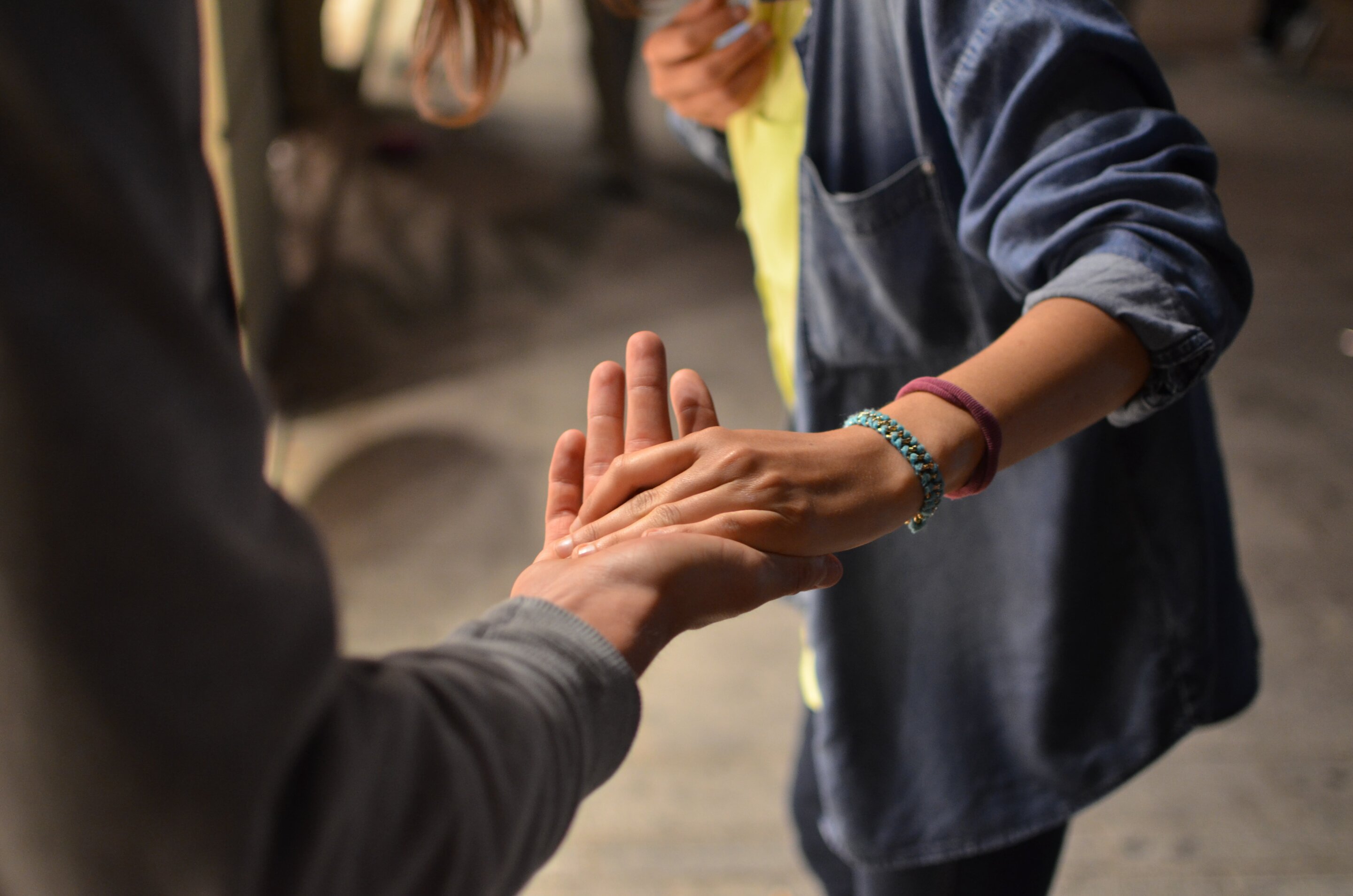#How vulnerable groups were left behind in pandemic response

“#How vulnerable groups were left behind in pandemic response”

Viruses like COVID-19 make no distinction between those they infect. They should in theory cause disease in the rich just as they do the poor and pay no heed to social status or cultural background. But in practice the pandemic has widened the gulf between vulnerable groups and other populations in Europe rather than helping to level out inequalities in society, researchers warn.
People who were marginalized before the coronavirus appeared—such as migrants, poorer communities and disabled people—were disproportionately impacted by the lockdowns and other responses deployed to tackle the health crisis.
“The overall consensus is that the fault lines in society were made more obvious and in many cases deepened during the pandemic,” said Jil Molenaar, a researcher at the Centre for Migration and Intercultural Studies at the University of Antwerp, Belgium. She is part of the COVINFORM project, which is examining how the pandemic and the response measures put in place to tackle it have impacted vulnerable communities.
“At the beginning there was some talk that this crisis would be a great equalizer as the virus could infect anyone, but now it is agreed this was definitely not the case,” said Molenaar. She and her colleagues are reviewing the response by governments, public health authorities and community organizations in 15 countries, then combining this with fieldwork and in-depth interviews with people from vulnerable populations, such as ethnic minorities, people with disabilities, migrants or those on lower incomes.
They have found that while most of the official advice on COVID-19, such as who should isolate and vaccination priorities, has focused on medical vulnerability to the virus—such as in the elderly or those with chronic illnesses. Advice tended to overlook those whose socioeconomic position, immigration status or language abilities meant they were disproportionately affected by other aspects of the pandemic.
“If you are thinking more broadly than just exposure to the virus, people with chronic illnesses are more likely to suffer from delays and disruption to ordinary routine care caused by the pandemic,” said Molenaar. “People who were already living in poverty have also been disproportionately hit because of the economic crisis that has resulted.”
Children
Those from poorer communities with children were particularly hard hit when schools were closed during the lockdowns in different countries. Many families relied upon school meals to help provide adequate, nutritious food for their children. Those who could not afford laptops were also unable to take part in online lessons that were used to replace many classes.
“Children who did not have the same equipment as other children in their class were being left behind,” said Dr. Tina Comes, associate professor on designing resilience at TU Delft. She is part of the HERoS project, which has been modeling the impact of different responses to the COVID-19 crisis to help inform future decision making by local, national and international authorities in Europe.
Dr. Comes said that the models clearly show that the ‘mixing that normally happens in a society’ has been greatly reduced during the pandemic. This segregation can have serious implications. “Children who were speaking a second language (for example) were suddenly not mixing with others outside their own families, so they began losing those language skills again,” said Dr. Comes.
The way governments and health authorities chose to communicate with communities also unwittingly led to some groups being disadvantaged, the researchers say. Early results from a survey run in the Hague, in the Netherlands by Dr. Carissa Champlin and Mikhail Sirenko as part of the HERoS project found that non-native Dutch speakers tended not to engage with information on television as their main source of information. This might be because those who did not speak Dutch well struggled to understand the complex information conveyed in official press conferences, says Dr. Comes.
Instead, non-native Dutch speakers made primary use of the internet to get information—about 41% said they used the internet compared to 20% who used TV, while 36% of Dutch speakers used television as their main information source.
“If you don’t have the same access to information, perhaps because it is not easy for you to follow a Dutch press conference, you may look elsewhere,” she said. This could have led people finding information from unreliable sources. It also led to new forms of ‘digital inequality’ among those who did not have the same level of access to online information or computers, said Dr. Comes. “Governments should not exclusively focus on one channel but take into account that a heterogeneous population can only be reached by using a plethora of tailored and online channels.”
Undocumented
Language barriers were not the only problem faced by some immigrant communities, however. Undocumented migrants and refugees, for example, are considered vulnerable due to their legal status in the country where they live. Without official documents or health service numbers, it can then become difficult to access essential services and medical care.
“This is becoming quite relevant in the vaccination programs now as there is a risk people will be left out,” said Molenaar.
Access to vital services was also severely restricted by lockdown measures. Dr. Comes and her colleagues compared three different neighborhoods in The Hague, in the Netherlands, and found that as people were restricted to their neighborhoods, their access to urban services such as education and support structures varied between income groups—either because of the type of transport they had available or because of digital literacy issues as services shifted online.
“There were a lot of overlapping issues,” said Dr. Comes. “The people who were disproportionately affected tended to do jobs that meant they couldn’t work from home, but they also have bigger families, more care responsibilities for children and face language barriers. Often these communities are very tight knit, so they are helping each other out in a network, but that was taken away by the lockdowns as people were not supposed to visit each other.”
And this widening of inequality within societies around Europe is likely to persist for some time even after the pandemic subsides. Those children that have fallen behind fellow classmates in education because they struggled to access lessons online, for example, could suffer the effects of this later in life unless they are offered additional support to catch up, says Molenaar. The economic effects of the pandemic are also likely to reverberate for longer than the virus itself, and unemployment will hit those on lower incomes harder than those who earn more.
“There is no easy way to address these longer term effects with single top-down solutions,” said Molenaar. “The key would be for policy makers and authorities to shift from paternalistic strategies—based on assumptions that “we know what is best for you”—to bottom-up strategies that prioritize participation and representation, to actively engage with different groups in society and respect their agency in knowing what works for them.”
Learning disabilities
One group that has been particularly hard hit by the virus are those with learning disabilities. In some countries, such as the UK, death rates among people with learning disabilities were six times higher than in the general population in the first wave of coronavirus.
“In the data we have today, there is good evidence that people with disabilities and especially those with intellectual and learning disabilities, are being quite badly hit by COVID-19,” said Dr. Jessica Dimka, a biological anthropologist at Oslo Metropolitan University, Norway.
Dr. Dimka has been studying how the 1918 influenza pandemic—which claimed more than 50 million lives as it swept around the world—impacted disabled people. Her project, DIS2 has been using historical records from mental health institutions in Norway alongside data on people with disabilities living in northern Sweden during the 1918 pandemic. Combining this with computer modeling, she is hoping to look at how the disease itself spread among these groups and also how they were affected by social factors.
Data from both the 1918 pandemic and the one happening today suggests that people with disabilities should feature far more prominently as an at-risk group in public health responses to COVID-19 and future pandemics, according to Dr. Dimka.
“If you look at the vaccine recommendations in Norway, and I’m sure it will be true for a lot of different countries, the emphasis is on high-risk individuals,” said Dr. Dimka. While a couple of learning disabilities do feature in official vaccination recommendations, most do not and the advice is often not consistent, she says. “One of the things that has been most striking is that it feels like we didn’t learn a whole lot from past pandemics.”
Lessons
With the risk of pandemics likely to increase in the future, both Dr. Comes and Molenaar agree there are important lessons to be learnt about how vulnerable groups are treated.
“In terms of crisis communication, it took too long for people to realize there are lots of people who are not able to access or understand this official information,” said Molenaar. “Many of the pandemic preparedness plans that existed before COVID-19 didn’t have details about how the responses could address the needs of different vulnerable groups. Civil society was left to pull a lot of the weight in the early stages.”
While many communities set up neighborhood initiatives to help out those who were struggling during the pandemic, there was little coordination between them. “We saw a lot of the initiatives that sprang up were very fragmented and not really connecting with each other,” added Dr. Comes.
The key, all three researchers say, is to have plans in place before a pandemic hits as then vulnerable communities won’t be overlooked or missed out in the emergency responses that follow.
“The key thing is to be aware that some people are going to struggle more,” added Molenaar. “And have a plan.”
This story is part of a series in which we hear from the next generation of scientists and researchers who are working to tackle global challenges.
Discussions of preparedness lessons from COVID-19 and how research and innovation can help to leave no one behind in the post-pandemic recovery will take place on 23 June as part of the European Commission’s Research and Innovation Days conference.
Citation:
How vulnerable groups were left behind in pandemic response (2021, June 7)
retrieved 7 June 2021
from https://phys.org/news/2021-06-vulnerable-groups-left-pandemic-response.html
This document is subject to copyright. Apart from any fair dealing for the purpose of private study or research, no
part may be reproduced without the written permission. The content is provided for information purposes only.
If you liked the article, do not forget to share it with your friends. Follow us on Google News too, click on the star and choose us from your favorites.
For forums sites go to Forum.BuradaBiliyorum.Com
If you want to read more Like this articles, you can visit our Science category.



